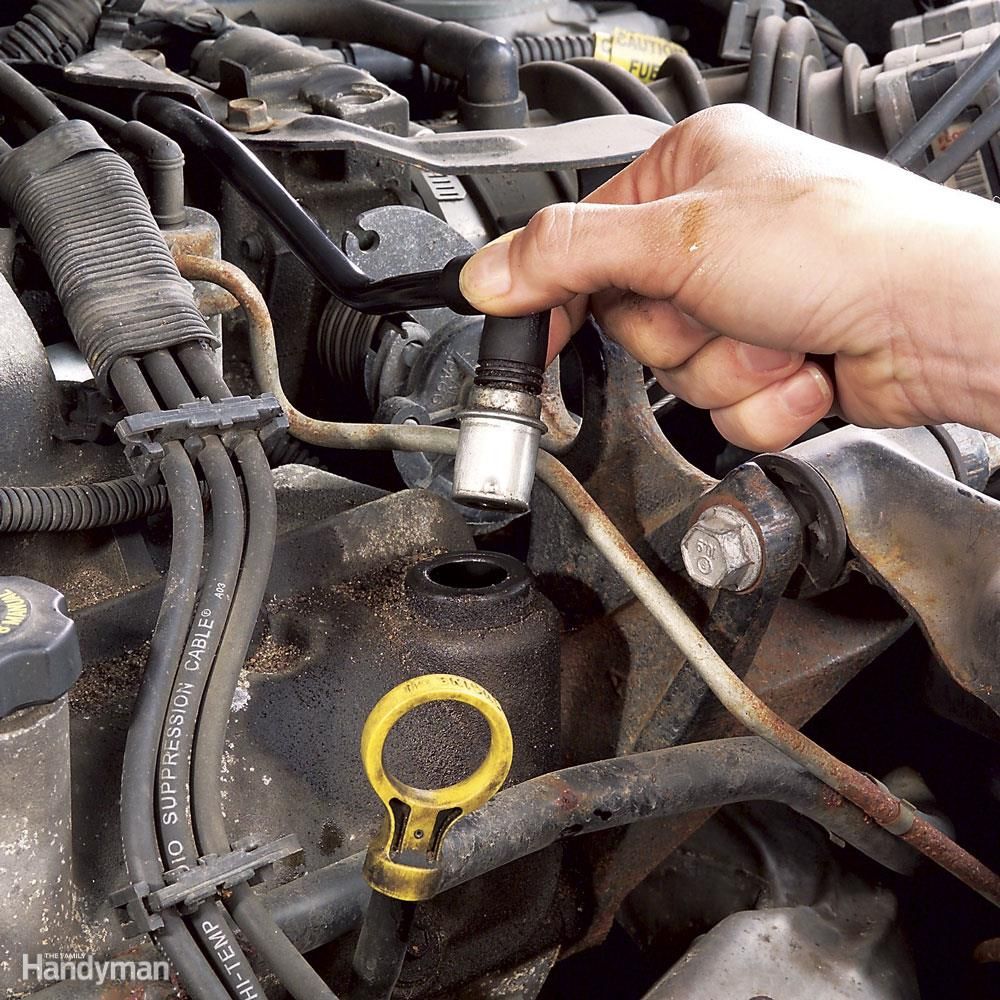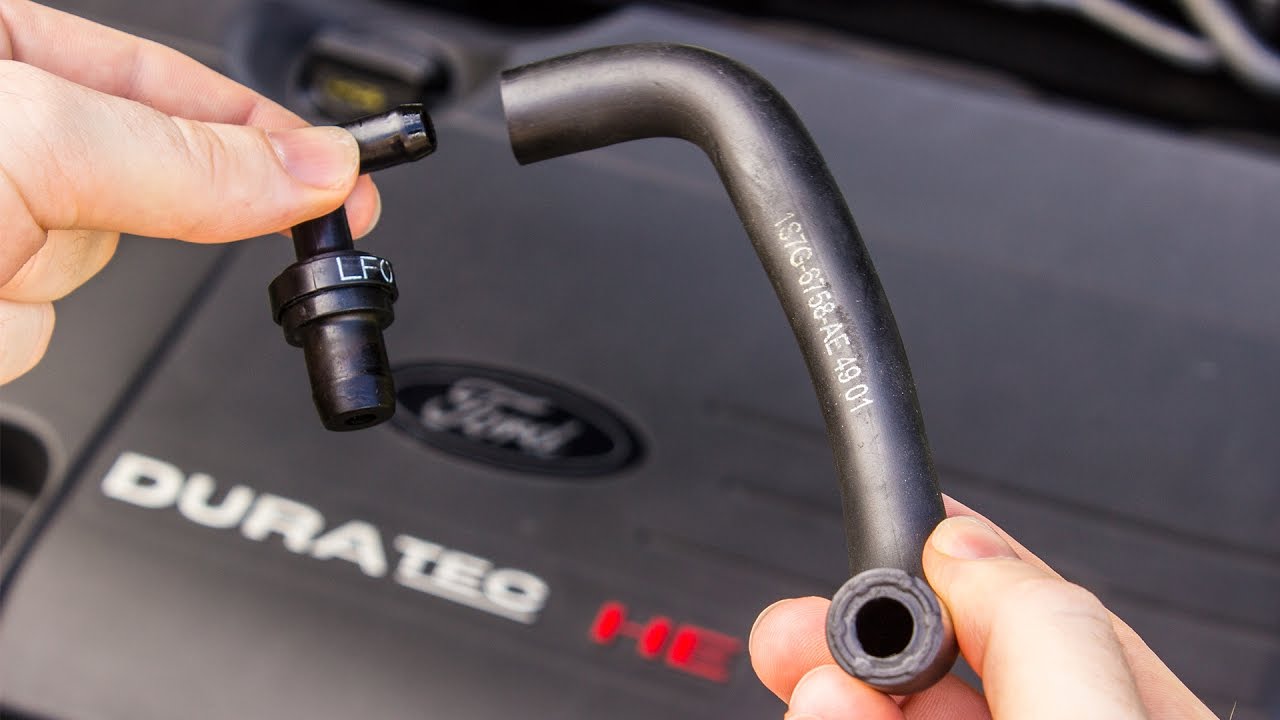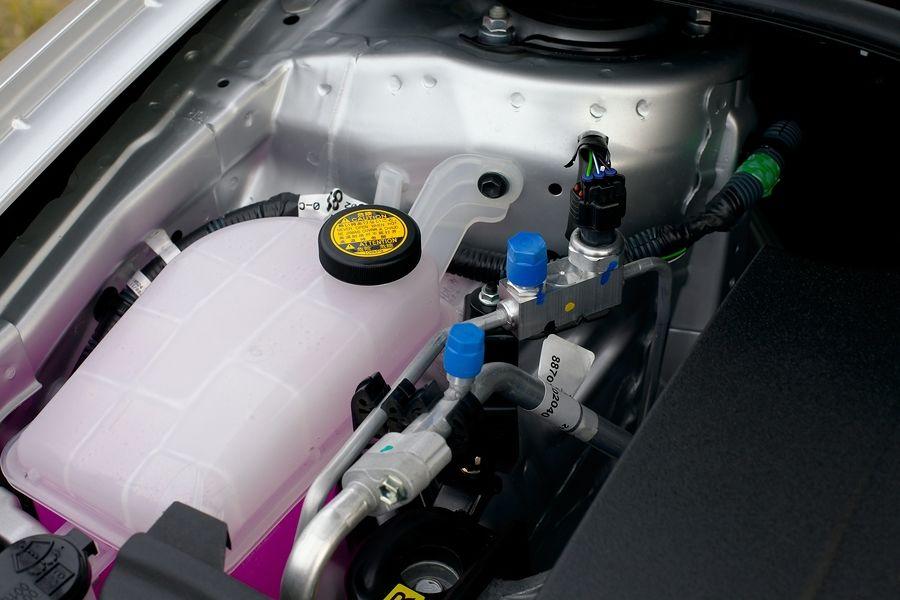8 Bad PCV Valve Symptoms & How To Fix
The positive crankcase ventilation valve or the PCV valve is responsible for regulating the pressure and airflow in your engine. It is a component often overlooked in scheduled servicing, but without a functional PCV valve, you will notice various problems with the way your vehicle runs. Fortunately, the PCV valve is easy and cheap to replace, so you can do it yourself periodically to make sure your engine always operates in tip top shape. Knowing bad PCV valve symptoms, how to troubleshoot and replace the PCV valve therefore are basic car maintenance tips that you must master.
Understanding The PCV System and PCV Valve
Before we dive into bad PCV valve symptoms, it’s important that you understand how the positive crankshaft ventilation system and the PCV valve work.
Oil is used to lubricate automotive engine parts, and when oil is churned by moving parts, pressure is produced. Back in the days, the pressure in the crankcase was simply vented out into the atmosphere through a road-draft tube and breather cap. In modern automobiles today, a PCV system is used instead to handle the job of pressure ventilation as well as some other tasks.
The Positive Crankcase Ventilation system consists of the PCV valve, tube, grommet, and a hose for supplying air to the crankcase. The PCV valve is located on the valve cover of most engines, but it can also be on a hose between the valve cover and the air intake filter, or come integrated with the valve cover in some models. Just pop open the hood, locate the hose on the top of the engine and follow it, you will find the PCV valve. Most PCV valves are constructed the same way, consisting of two hosing connectors with a spring-loaded one-way valve inside.

What does a PCV valve do? One major role of the PCV valve has to do with emissions. It is one of the oldest and most used emission devices in automobiles. The PCV valve function is to transfer emissions from the crankcase through the PCV valve hose to the intake manifold, where the excess gas can be used as fuel. Therefore, these gases are combusted again in another engine cycle instead of being wasted.
This helps the engine run cleaner and more effectively. This also means less harmful tailpipe emissions get released into the environment and make their way into our bodies.
The second major role of the PCV valve is to deal with moisture inside the engine, which is harmful for all engine parts. When the engine runs, it generates heat, which creates condensation as the engine cools down. When condensation forms, it results in excess moisture. Usually, additives present in engine oil will absorb this excess moisture and hold it in suspension. Over time though, as condensation increases, engine oil additives can no longer absorb excess moisture. When this occurs, moisture will attack the metal parts of the engine, causing corrosion and further damages, which can result in malfunction.
The PCV valve gets rid of engine condensation by using a manifold vacuum that draws those harmful vapors to the intake manifold. These vapors then get mixed with the fuel-air mixture to burn in the combustion chamber.
When the engine is at idle or at low RPMs, the pressure or vacuum in the intake manifold increases, pulling the valve upward and staying in the half open position, allowing access to the intake manifold. The high vacuum will let the blow-by vapors get sucked out from the crankcase at lower RPMs.
When you are revving up your engine and driving on higher RPMs, the pressure in the intake manifold drops, the light spring inside the PCV valve will hold the valve in the fully open position and suck out even more crankcase emissions caused by faster crankcase pressure build-up and higher RPM. In case of backfire from the crankcase, the PCV valve will close to prevent vacuum leaks as well as engine misfire.
When the engine is idle, you have a lot of vacuum inside the intake manifold, which helps the emissions get sucked out from the crankcase efficiently at lower speeds.
How can a PCV valve go bad and what happens when the PCV valve goes bad?
Over time, sludge, fuel and oil varnish deposits can accumulate inside the PCV valve and will restrict or even block the flow of crankcase gases through the PCV valve hose. When the PCV system is clogged, blow-by vapors won’t get sucked out from the crankcase efficiently and metal engine parts will be subjected to excess moisture.
A clogged PCV valve can even be stuck in either the close or open position. When the PCV valve is stuck closed, this will result in excessive vacuum or pressure in the crankcase, which will cause oil to leak past seals and gaskets. When the PCV valve is stuck open, or when the air-supply hose is leaking, the resulting vacuum leak will cause rough idling and engine surging.
The PCV valve is connected to the air intake tube via a rubber vacuum hose. This hose uses the engine’s natural vacuum to prevent excessive pressure build up inside the crankcase. If the PCV valve is damaged in any way, it can cause engine oil to push through the PCV valve up into the air intake tube, where it will drain into the air filter and filter housing. When this happens, you’ll see an oily spot near the PCV inlet hose.
With a bad PCV valve, the performance of your vehicle will suffer in many ways, as will be detailed down below. Trying to drive when you know there’s a malfunctioning component in your car is never recommended. And do not attempt a long road trip when you’re experiencing bad PCV valve symptoms.
As soon as you notice signs of a bad pcv valve and have troubleshooted to determine that the culprit is indeed the PCV valve, you might be able to drive a couple miles to the nearest repair shop or get the parts needed for a replacement. What you should do then is to plug the vacuum side of the PCV line. But don’t attempt to drive any longer than you absolutely need to, as this may cause the pressure to build up in the crankcase, which would result in oil leaks. And without a properly functioning PCV system, the engine will run on a lean or rich air-and-fuel mixture.
Bad PCV Valve Symptoms
Noise from the Engine
When you hear a strange sound while driving, it is a telltale sign that something is not working properly. One of the most common bad PCV valve symptoms is a hissing or whistling or whining noise from the engine, and sometimes a low moaning sound. The hissing sound is most probably because of a leak in the hose of PVC.
The easiest way to verify whether a bad PCV valve is indeed the culprit is to temporarily block the vacuum source to the PCV valve. If the noise changes or goes away, you should immediately take your car to an auto repair shop, as ignoring it can cause misfires, rough running, vacuum leaks, and all kinds of performance problems you wouldn’t want.
Check Engine Light Warning
There may be various reasons for the Check Engine Light illuminating on your dashboard, and a bad PCV valve is one of them, since the PCV valve works directly with your engine. Do note that if you own an old model car, the PCV system might be fitted without an electronically controlled engine, and thus a bad PCV valve will not cause the Check Engine Light to illuminate.
When the engine light shows up, there is a trouble code stored in the engine control unit (ECU). To read the trouble code from the engine control unit to find out exactly what is wrong with your PCV system, you will need to use an OBD-II scanner or code reader.
Some common trouble codes often associated with a faulty PCV valve are as follows:
- P052E – Positive Crankcase Ventilation Regulator Valve Performance
- P053A Positive Crankcase Ventilation Heater Control Circuit /Open
- P0171 – Fuel System Too Lean
- P0300 – Random/Multiple Cylinder Misfire Detected
If you get any of these trouble codes from your ECU, you should have your PCV valve inspected by a professional, or do it yourself by following the steps provided further below.
But note that just because you get the above codes doesn’t guarantee that a bad PCV valve is indeed the culprit for your issues. These codes can also be triggered by problems elsewhere. Therefore, after the code reading, do not proceed to replace the PCV valve right away but pay attention to other unusual symptoms and carry out proper troubleshooting to better pinpoint the reason.
Misfiring while Idling
Another common bad PCV valve symptoms is misfiring with the engine. A misfire will sound like the engine has a vibration to it, and it is a sure sign that the engine is not in optimal operation. This kind of situation usually happens when the vehicle is idle in most cases. The reason behind engine misfiring is vacuum leaks, especially those that are confined to one cylinder, which allows more air to reach the affected cylinder and throw off the optimal air and fuel mixture. Engine misfiring also happens when there is a loss of vacuum due to a blockage in the PCV hose due to buildups of sludge, fuel and oil varnish deposits over time, or if the hose is pinched.
Rough Idle
Because the PCV valve controls the flow of blow-by vapors from the crankcase to the intake manifold, a faulty or broken PCV valve can manifest itself in the same way as an intake air leak. A bad PCV valve can cause the idle RPM to get too high and unusual idle behaviors like very rough idling.
READ MORE
Oil Leaks
If the PCV valve or the hoses are clogged, the pressure inside the engine crankcase will get very high, which will push the oil in the cylinders out through the seals and gaskets since there’s no other way for the pressure to be released. If you suddenly see several large oil puddles dripping onto the floor of your garage (upon inspection, oil is leaking through the seals) and if you notice increased oil consumption, inspect the PCV valve and the hoses to the valve to make sure they’re not blocked.
Engine Running Lean/Rich & Poor Fuel Economy
One common bad PCV valve symptoms is poor fuel economy. A malfunctioning PCV valve will throw off the ratio of the air and fuel mixture, which needs to be precise for optimal combustion. This is because the vacuum on the intake side of the cylinder head will not be able to properly determine the correct amount of fuel to be supplied to the cylinder for combustion. Another reason is a bad PCV valve that might be stuck open or may not close all the way can let oxygen get into the combustion chamber.
As a result, the fuel can be lean or rich. When the correct amount of fuel is not delivered for optimal combustion, this means poor fuel economy.
Smoke from Exhaust
If the PCV valve or the hoses to it are blocked, the high pressure in the crankcase will push engine oil into the combustion chambers, where the oil will be burned and go out through the exhaust pipe. Burning oil will cause a lot of blue smoke from your tailpipe.
Otherwise, you can get thick white or black smoke coming out from the exhaust pipe in the case that a bad PCV valve is causing a rich or lean mixture, depending on what type of mixture problem the engine has.
Rough Acceleration
When you have a bad PCV valve that’s throwing off the air and fuel mixture fed to the engine, you might notice rough acceleration on high and low RPMs. On most cars, you will less likely notice this scenario on higher RPMs than during idle, but it can still happen depending on the PCV valve’s design.
READ MORE
How to Test Your PCV Valve
If you’re experiencing one or more of the above bad PCV valve symptoms, it’s time to inspect the component and see what could be causing it to malfunction.
Inspect PCV valve grommets
Bad PCV valve symptoms might be triggered by the hoses to the PCV valve and other mounting components, depending on how the valve is attached to the engine, rather than the valve itself.
In most cases, a pliable rubber grommet is inserted into a hole in the valve cover to seal the PCV valve to the cover and secure it in place. Sometimes, the valve may screw in or twist-in and seal with an O-ring. No matter what the design, the PCV valve must always be sealed nice and tight to the engine, which means that any leak is problematic.
Due to the nature of their material, rubber grommets and O-ring seals harden over time and crack or split, thus causing an oil leak and allowing contaminants to enter the engine. This is why whenever you replace the PCV valve, you must swap in new rubber grommet or O-rings as well as a preventive measure. Note that grommets come in a variety of designs, depending on the engine design, so make sure you get the right one.
Inspect PCV valve hoses

PCV inlet and outlet hoses are also prone to natural deterioration. Over time, they will harden and can crack or split. PCV system’s hoses are designed to be oil resistant, but do also check if the hoses are oil soaked and swell up, which would impede their ability to seal properly. A leaking PCV inlet or outlet hose can allow contaminants to enter the engine and can cause a Check Engine Light.
Always replace PCV hoses with the original equipment molded hose from your vehicle manufacturer. Swapping in the wrong PCV hose types will most surely cause oil leaks and sludge buildups, as well as other PCV system failures.
Inspect PCV
If all these don’t solve the problem, identify the mesh filter, and replace it as well. If that doesn’t cut it still, proceed with the PCV valve.
Inspect the PCV valve itself
The last thing you can do is check the valve itself. In most cases the PCV valve can be removed by pulling it out of the valve cover grommet and then removing the rubber vacuum hose.
A working valve always makes some rattling. Shake the PCV valve and try to listen to the rattle.’ If there is no noise, it means you need to replace the PCV valve.
Check for moisture contamination
While you’re inspecting the PCV valve itself, check for moisture contamination in the form of a cloudy or milky film in the PCV valve or hose. If there is moisture in the system, you’ll need to replace the valve. That said, moisture in the PCV valve is an indication of other problems, and replacing the valve alone won’t fix the problem, but you also need to change the oil. Otherwise, the problem remains and symptoms will soon return.
In general, if you mostly drive your vehicle on short trips, particularly under ten miles, moisture buildup is more serious, which means you will need more frequent oil changes. Together with the oil changes, try to combine your errands so that every time you turn the key, you’re driving for longer cycles. But even after that, if the moisture buildup problem is not lessened, then some other engine problems are causing moisture contamination.
Moisture is a liquid, so moisture contamination flows through the engine oil filter. This is part of the reason why you must change your oil more frequently.
The second reason is that when you primarily take short trips of under ten miles, the engine does not have enough time to reach optimal operating temperature. This is important, because when the engine heats up properly, the heat of the oil causes the excess moisture in the engine to boil. If you drive far enough, usually after about 20 minutes of driving, the PCV system will be able to get rid of most of this moisture from the oil in the form of steam.
This means two things. One, while your automaker would recommend that you get an oil change every 5,000 to 7,000 miles or so, the number of miles driven alone is not a good indication. You need to consider whether you take short or long trips more often. Second, if you primarily drive your vehicle for trips that last at least 20 minutes each way, you can safely go a bit further between oil changes as per manufacturer’s recommendations.
PCV Valve Lifespan and Replacement
PCV Valve Lifespan
There’s no universal agreement on the lifespan of a PCV valve. Many car manufacturers are not strict about PCV system maintenance. The suggested PCV-servicing interval can range widely from manufacturer to manufacturer, from every 20,000 miles or 90,000 miles. It lasts as long as it can given the operating conditions it’s subjected to. A PCV valve often lasts around 80,000 miles or more and is usually replaced at the first general ignition tune-up. Some can fail much earlier. Under extreme conditions 30,000 mile replacement may be needed.
Most of the PCV valves are made of plastic hoses with a spring inside. Any plastic would wear out over time when fitted in the constantly heated engine bay.
The lifespan of the PCV also depends on how you drive. If you mostly undertake short errands that stretch under ten miles, your PCV valve is destined to fail prematurely compared to if you mostly take long trips. And of course it depends on the maintenance of the engine. A poorly maintained engine means frequent replacement of various parts, with the PCV valve included.
So if you don’t skip scheduled servicing, change your oil periodically, as well as perform other maintenance that ensures the overall health of your engine, then your PCV valve will function for longer.
While the PCV valve is prone to wear and tear, too many car drivers ignore it on schedule check-ups. But this part is not expensive or difficult to inspect and replace, and a bad PCV valve can actually lead to more expensive and troublesome repairs, so put the PCV valve in your list of serviced items. If your engine is approaching critical maintenance mileages or has developed an oil leak, it’s best to have the PCV system inspected.
How to replace a PCV valve
Replacing the PCV valve is very straightforward, and locating/ accessing it is also easy. Most PCV valves simply push into a rubber grommet. Just remove the exit hose and make a slight twist to break them free. Pull lightly to remove the valve. Some valves use a quarter-turn system, which must be rotated a quarter turn, counter-clockwise to remove. A few other designs are actually threaded in and must be unscrewed to pull out. Note that to lower costs, some automakers have adopted a restrictor to substitute for the PCV valve.
How much does it cost to replace a PCV valve?
The average PCV valve replacement cost is between $50 and $250, depending on your vehicle’s make and model, and varying labor costs between states. This range does not include taxes and fees, as well as related repairs that come up during the inspection. Regardless of designs, most PCV valves cost between $20 and $50. The range for the labor cost is much wider though, ranging from $30 to as much as $200.
Generally, if your car is a rather old model, the PCV valve should be easy to access and replace; the whole process wouldn’t take much more than 10 minutes. But sometimes on newer cars, the PCV valve might be located under the intake manifold. This means you might have to remove the intake to access the PCV valve, which makes replacement more time-consuming and can take 3 hours in many cases. This is not that common though.
How often should the PCV valve be replaced?
Ideally, the PCV valve should be changed with every major scheduled service, that is at 30,000 miles, 60,000 miles, 90,000 miles and so on, according to what your vehicle manufacturer recommends. Neglecting your schedule servicing and regular oil changes will shorten the lifespan of your PCV valve.
Endnote
You can also check the PCV for the vacuum once you recognize the symptoms of a bad PCV valve. Let the engine warm up for about twenty minutes to check with the vacuum. Access the hood and disconnect the valve from the valve cover. When you block the end of the valve with your finger, it feels like sucking your fingertip. You would notice a speed drop of about 40 to 80 rpm.
When the RPM is more than that, the valve might be stuck open. When you feel no suction effect, check the valve and hose for any obstruction and clean it. You can also clean the valve and hose with lacquer thinner and a thin hose brush, and you are done.














